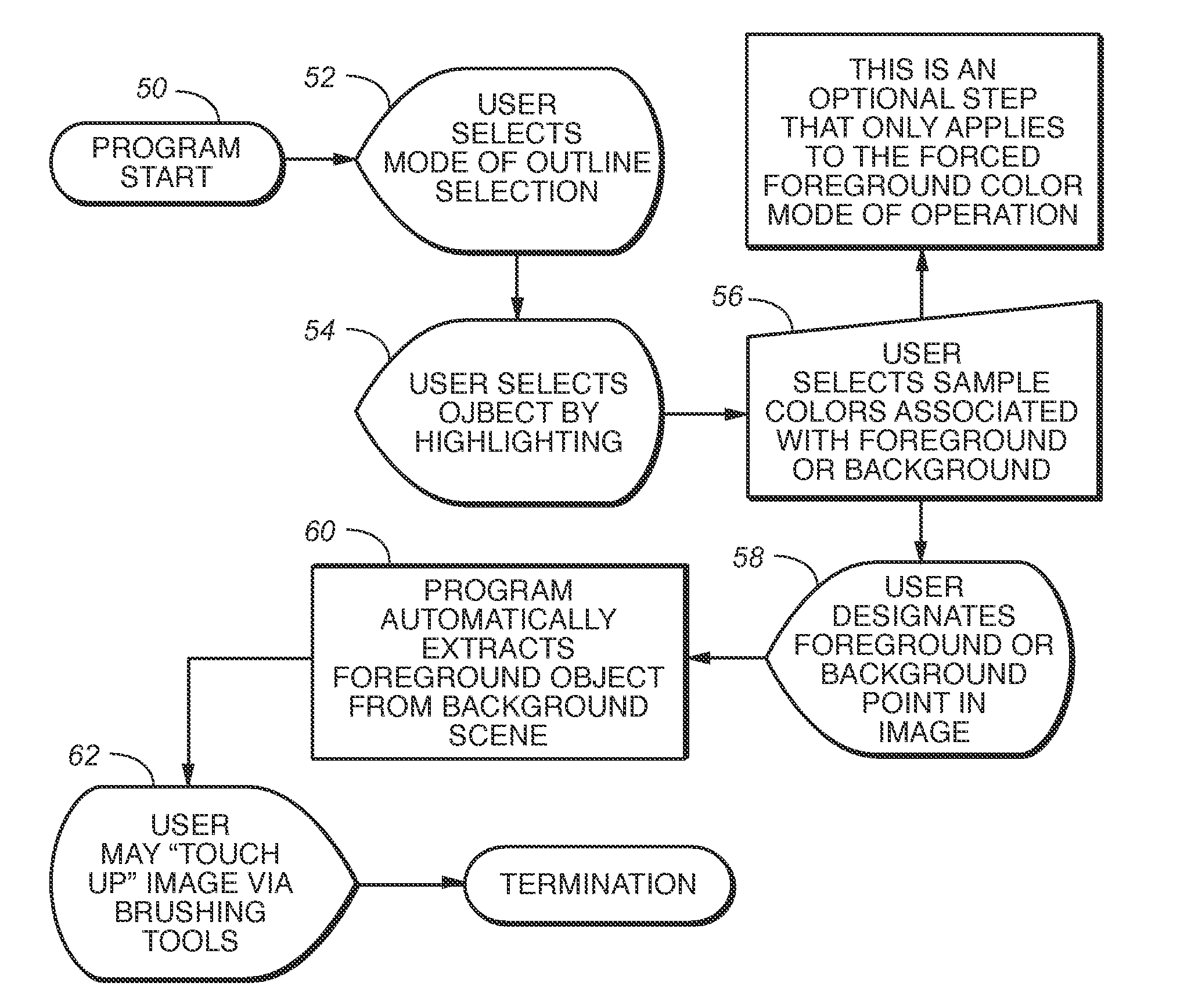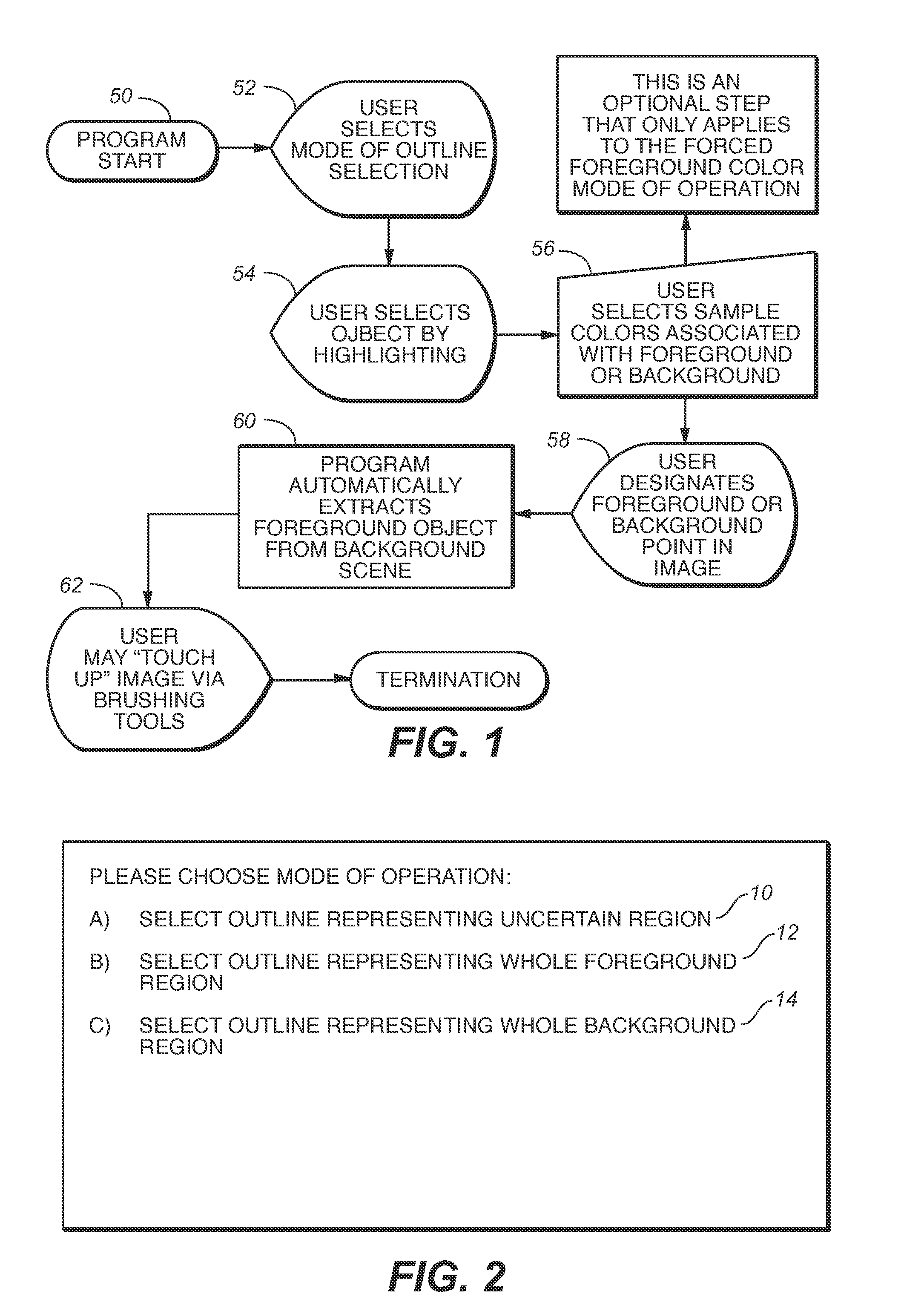Identifying intrinsic pixel colors in a region of uncertain pixels
a technology of intrinsic pixel colors and pixel opacities, applied in image enhancement, image analysis, instruments, etc., can solve problems such as difficult to solve simple unambiguous solutions, complex objects, and tedious definitions, and achieve the effect of reducing requirements, effective balance between speed of operation and memory requirements, and ease of modification
- Summary
- Abstract
- Description
- Claims
- Application Information
AI Technical Summary
Benefits of technology
Problems solved by technology
Method used
Image
Examples
Embodiment Construction
[0027]It is common for one working with digital images to extract objects from the image. The user selects an object to be removed from a scene by outlining its boundary. However, this outline covers pixels whose origins are difficult to ascertain (are they foreground or background?) either because it would be too much work or because foreground and background colors are blended together. As a result, there is a region whose pixels are in question with respect to their origin. One way to answer this question is to fill the uncertain region with colors based only on the colors which bound the region (within some small distance of the boundary). Having so estimated the intrinsic colors, the opacities of the pixels in questions can be estimated from a given blending model, thereby completing all of the information needed to complete the extraction. Therefore, masking / color extraction boils down to filling in an unknown region for which there is some color information that is the result...
PUM
 Login to View More
Login to View More Abstract
Description
Claims
Application Information
 Login to View More
Login to View More - R&D
- Intellectual Property
- Life Sciences
- Materials
- Tech Scout
- Unparalleled Data Quality
- Higher Quality Content
- 60% Fewer Hallucinations
Browse by: Latest US Patents, China's latest patents, Technical Efficacy Thesaurus, Application Domain, Technology Topic, Popular Technical Reports.
© 2025 PatSnap. All rights reserved.Legal|Privacy policy|Modern Slavery Act Transparency Statement|Sitemap|About US| Contact US: help@patsnap.com



